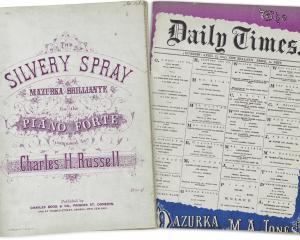
The Gallery purchased Automated Colour Field (variation 6) (2017), which was followed by the artist generously gifting Once More With Feeling (2014) to the collection. These works are currently on display in "In Motion: The Moving Parts of Contemporary Art", an exhibition that explores ideas of movement, motion and interactivity through contemporary art practices.
Baumann's art practice spans a range of media including installation, kinetic sculpture and performance. With the use of materials such as confetti, streamers, tinsel, vinyl, balloons, acrylic and smoke bombs, Baumann's work carries a sense of spectacle, celebration and whimsy.
Her works explore both the formal and conceptual relationships between colour, materials, space and the viewer - creating installations that play with light, reflection and movement.
Baumann's Automated Colour Field concept was first conceived in 2011, following a residency in Berlin, where she became interested in the mechanisms and movement of the scheduling boards at train stations.
Automated Colour Field (Variation 6) consists of 28 flip-clocks which, unlike their traditional numbered panels, flip coloured pieces of laser-cut paper in a colour spectrum of turquoise blue, azure blue, violet, fuchsia pink, tomato and red. The coloured pieces of paper flip over randomly across the surface of the work - revealing a sequence of unplanned patterns and colour combinations.
In Once More with Feeling, Baumann has repurposed a Trivision advertising billboard, replacing the billboard signs with a series of triangular prisms. These prisms continuously rotate 120 degrees, revealing iridescent colour as they turn. As the theatre lighting hits these prisms, a kaleidoscope of colour is created - colour that reflects and moves across the gallery space and the audience.
The exhibition
"In Motion" runs until September 29.
![‘‘Neil’s Dandelion Coffee’’. [1910s-1930s?]. EPH-0179-HD-A/167, EPHEMERA COLLECTION, HOCKEN...](https://www.odt.co.nz/sites/default/files/styles/odt_landscape_small_related_stories/public/slideshow/node-3436487/2025/09/neils_dandelion_coffee.jpg?itok=fL42xLQ3)










